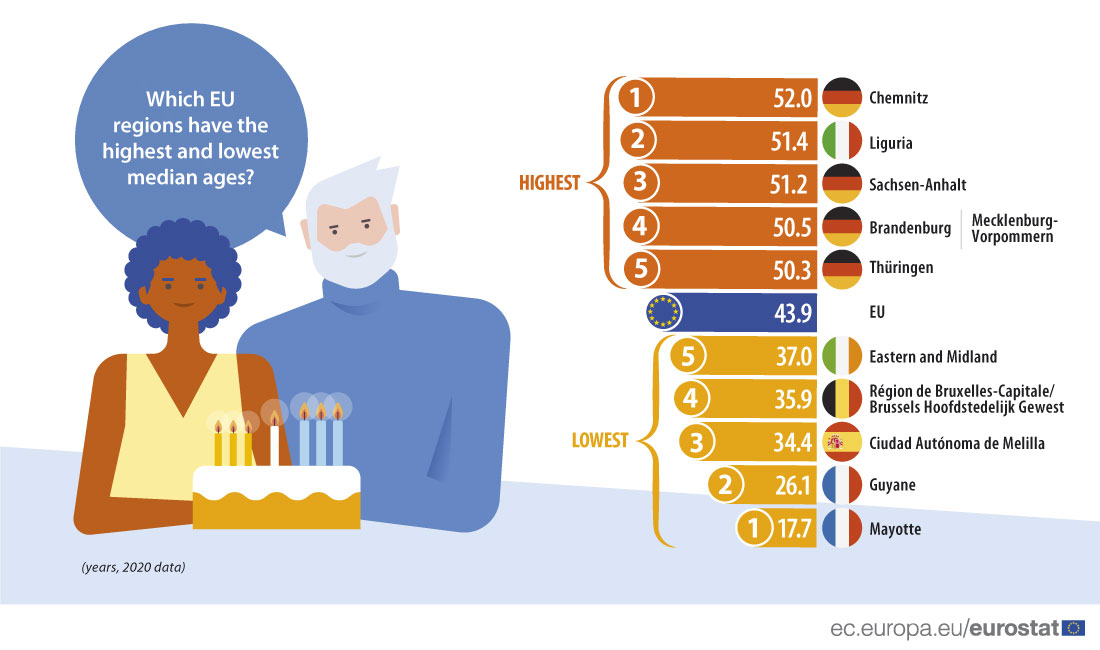In 2020, the median age of the EU population stood at 43.9 years. When compared with 2001 (the first reference year for which information is available), the median age increased by more than 5 years (from 38.4 years).
The median age indicator gives an idea of the rapid pace at which the EU’s population structure is changing and can identify the EU regions most at risk of facing the challenges of an ageing society. It can also reveal migratory patterns (young people leaving a region) or low birth rates.
Source dataset: demo_r_pjanind2
In 2020, most capital regions in the EU recorded relatively young populations – but the outermost French region of Mayotte recorded, by far, the lowest median age (17.7 years). This was followed by another French region, Guyane (26.1 years), and, at a distance, the Spanish region of Ciudad Autónoma de Melilla (34.4 years).
On the other hand, the highest median age was recorded in Chemnitz in Germany (52.0 years). This was closely followed by the Italian region of Liguria (51.4 years) and another 4 regions in Germany: Sachsen-Anhalt (51.2 years), Brandenburg and Mecklenburg-Vorpommern (both 50.5 years) and Thüringen (50.3 years).
You can hover over the different circles in the visual below to see the median age across the regions of the EU. The blue circles represent regions with a median age below the EU average (43.9 years) and orange circles represent regions with a median age equal to or above the EU average.
Would you like to know more about demography in the different EU regions?
- You can read more in the dedicated section of the Regions in Europe - 2021 interactive edition.
- You can also read more in the dedicated chapter of the Eurostat regional yearbook - 2021 edition.
- The corresponding maps in the Statistical Atlas provide a full-screen interactive map experience.
For more information:
- In this article, the regional data are presented at NUTS 2 level. Regional data for Estonia, Cyprus, Latvia, Luxembourg, Malta, Iceland and Liechtenstein: single regions at this level of detail.
- Regions in Europe - 2021 interactive edition
- Eurostat regional yearbook - 2021 edition, also available as a set of Statistics Explained articles
- Regions and cities, overview page on the Eurostat website
- Eurostat Statistical Atlas
- Eurostat Regions and cities illustrated
- Eurostat application “My Region” (web and mobile app)
- Eurostat dedicated section on population & demography
To contact us, please visit our User Support page.
For press queries, please contact our Media Support.


